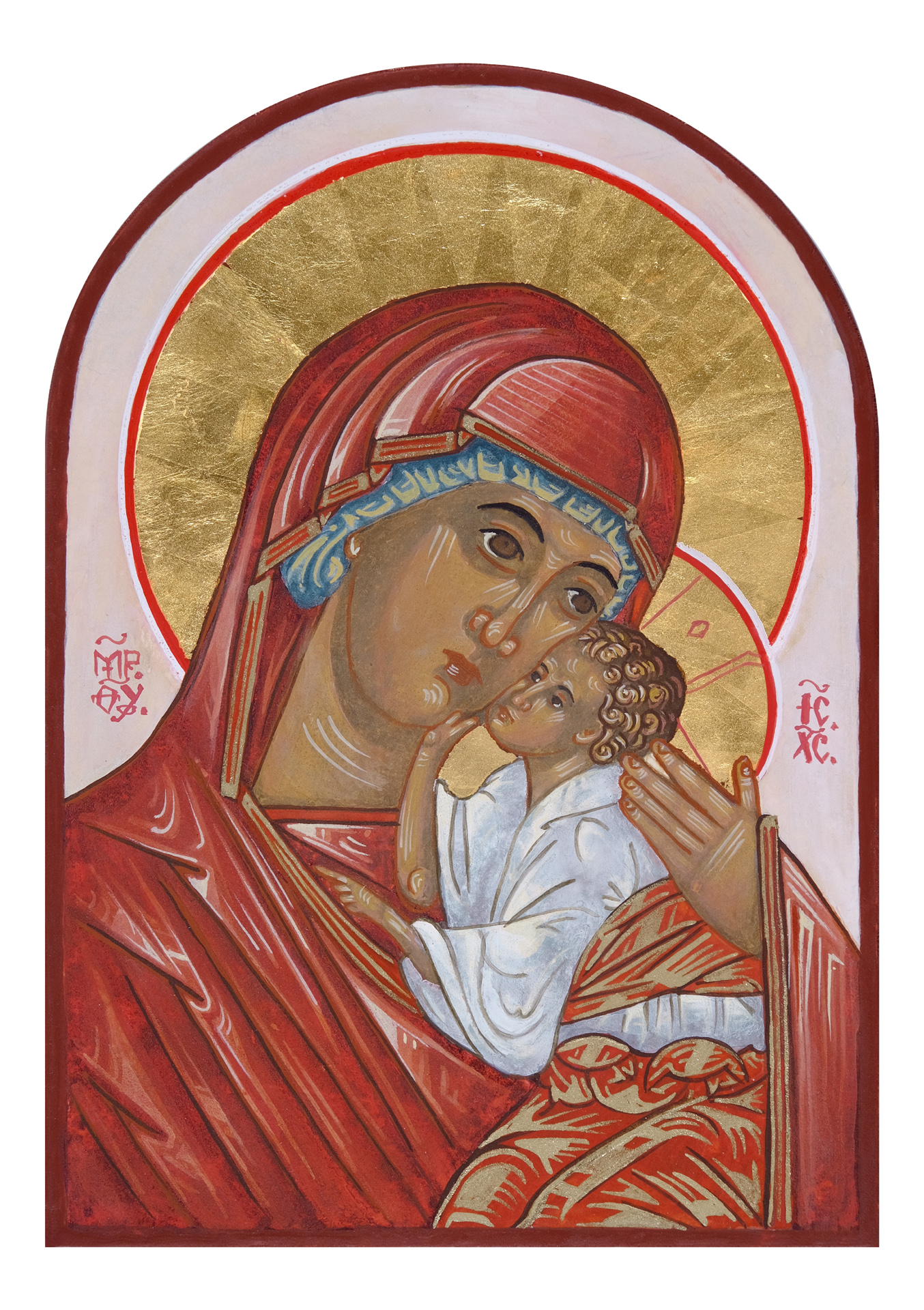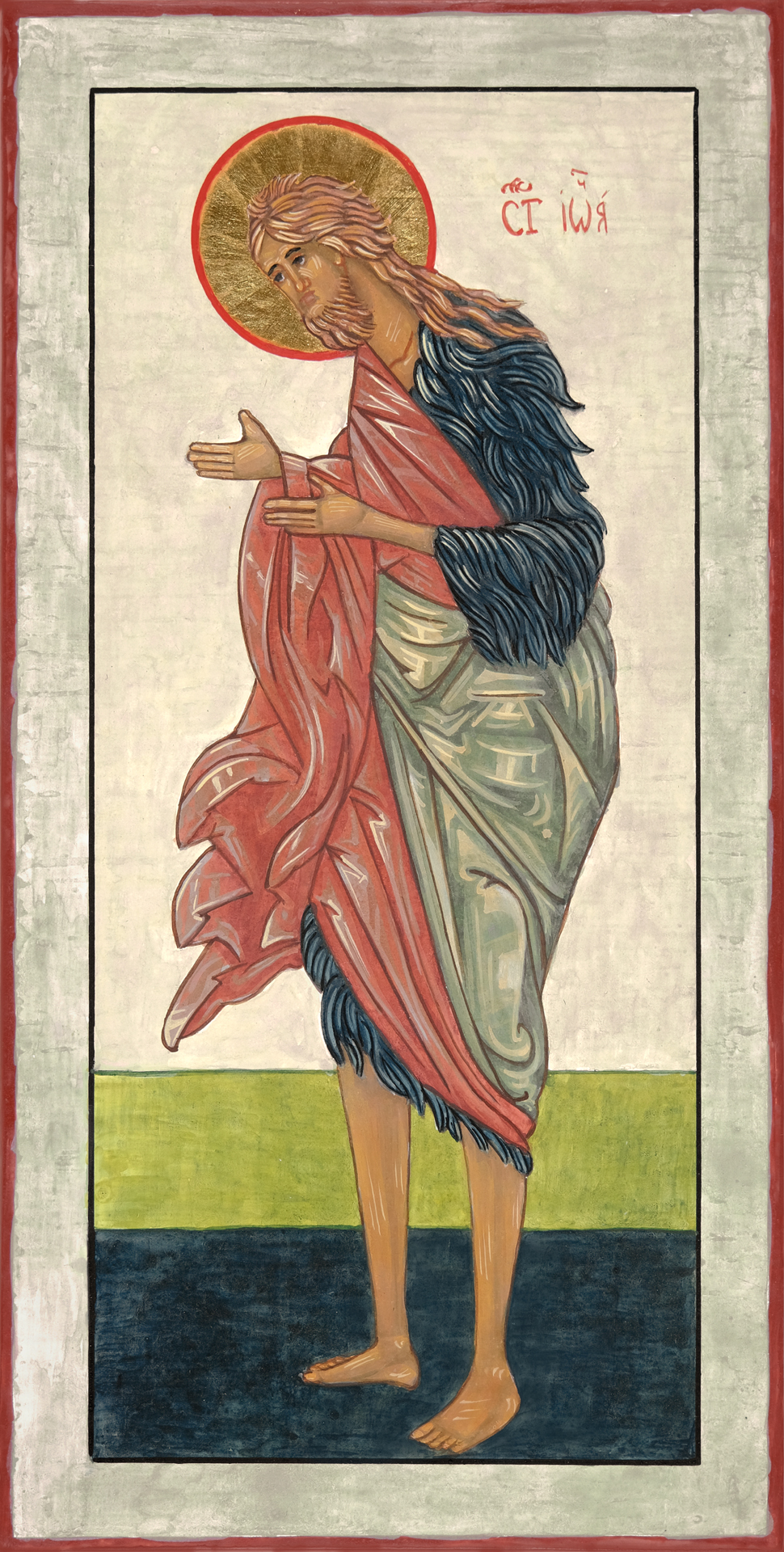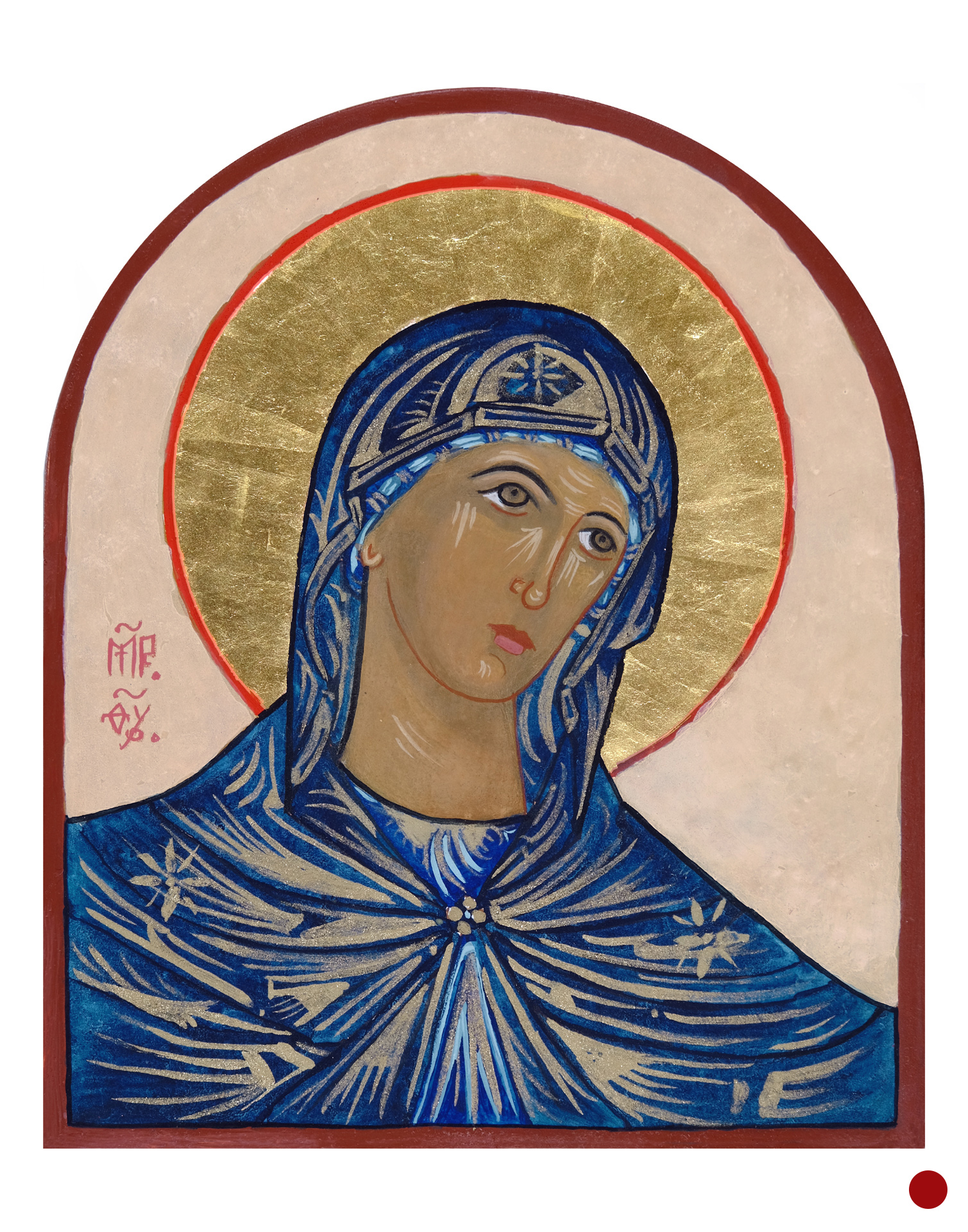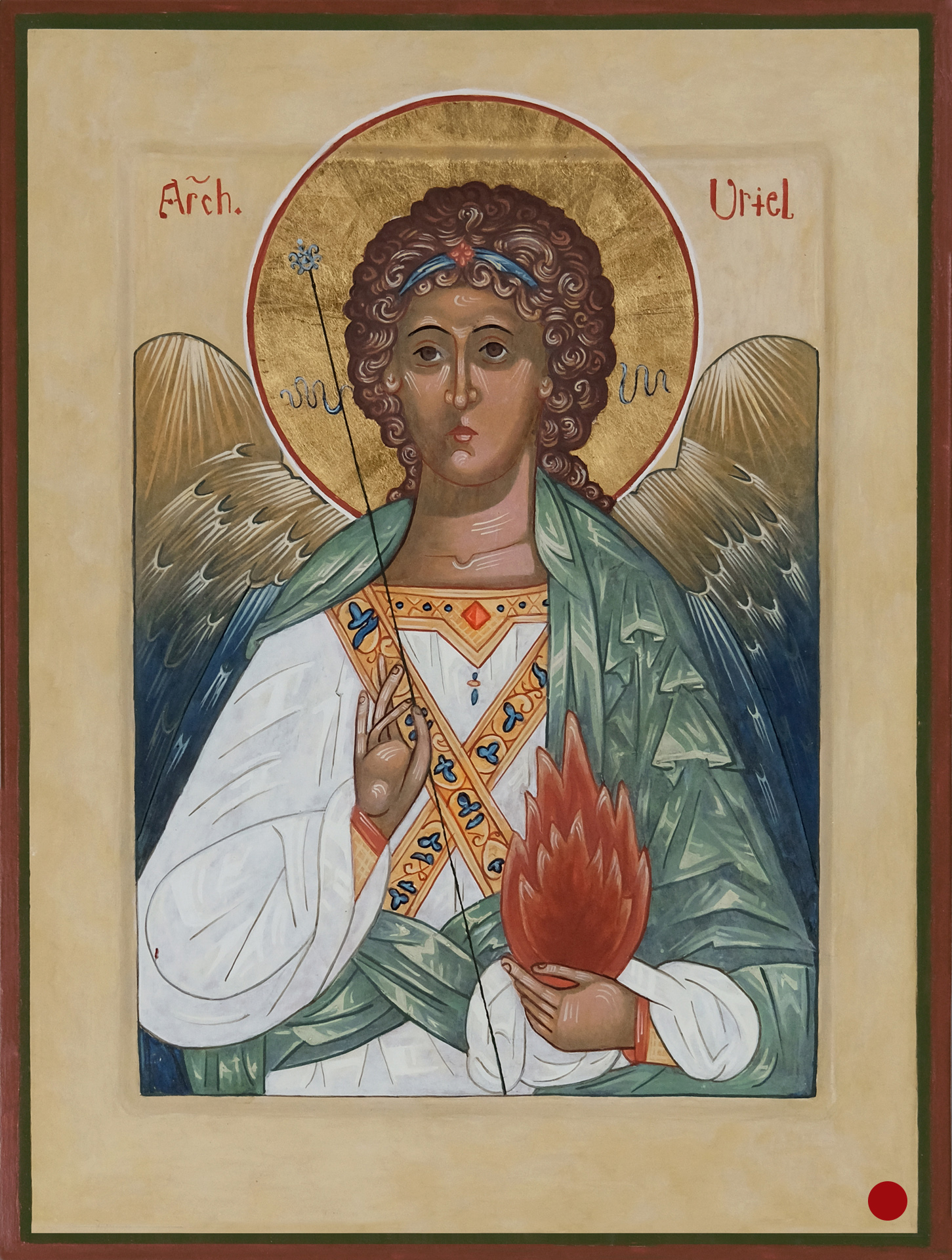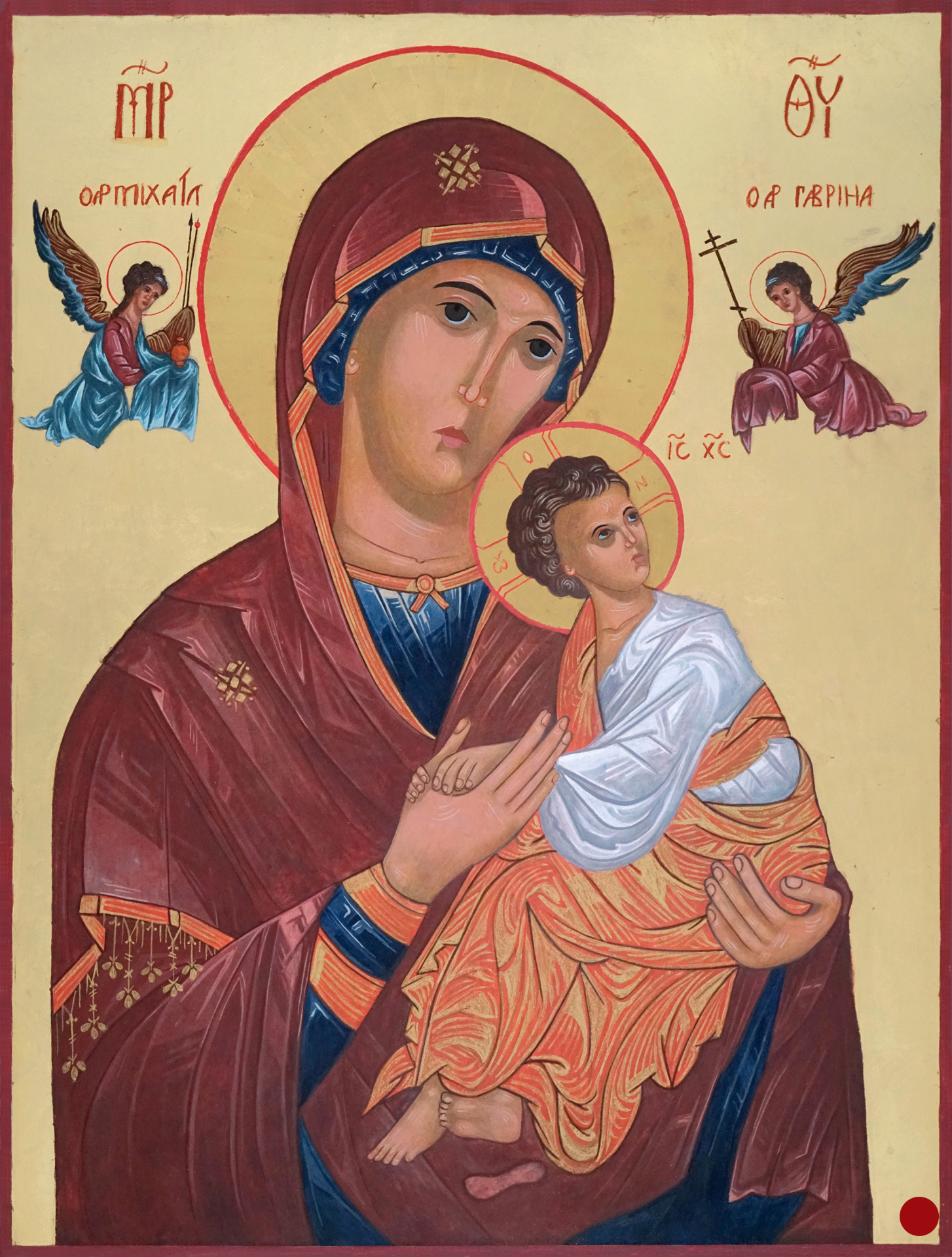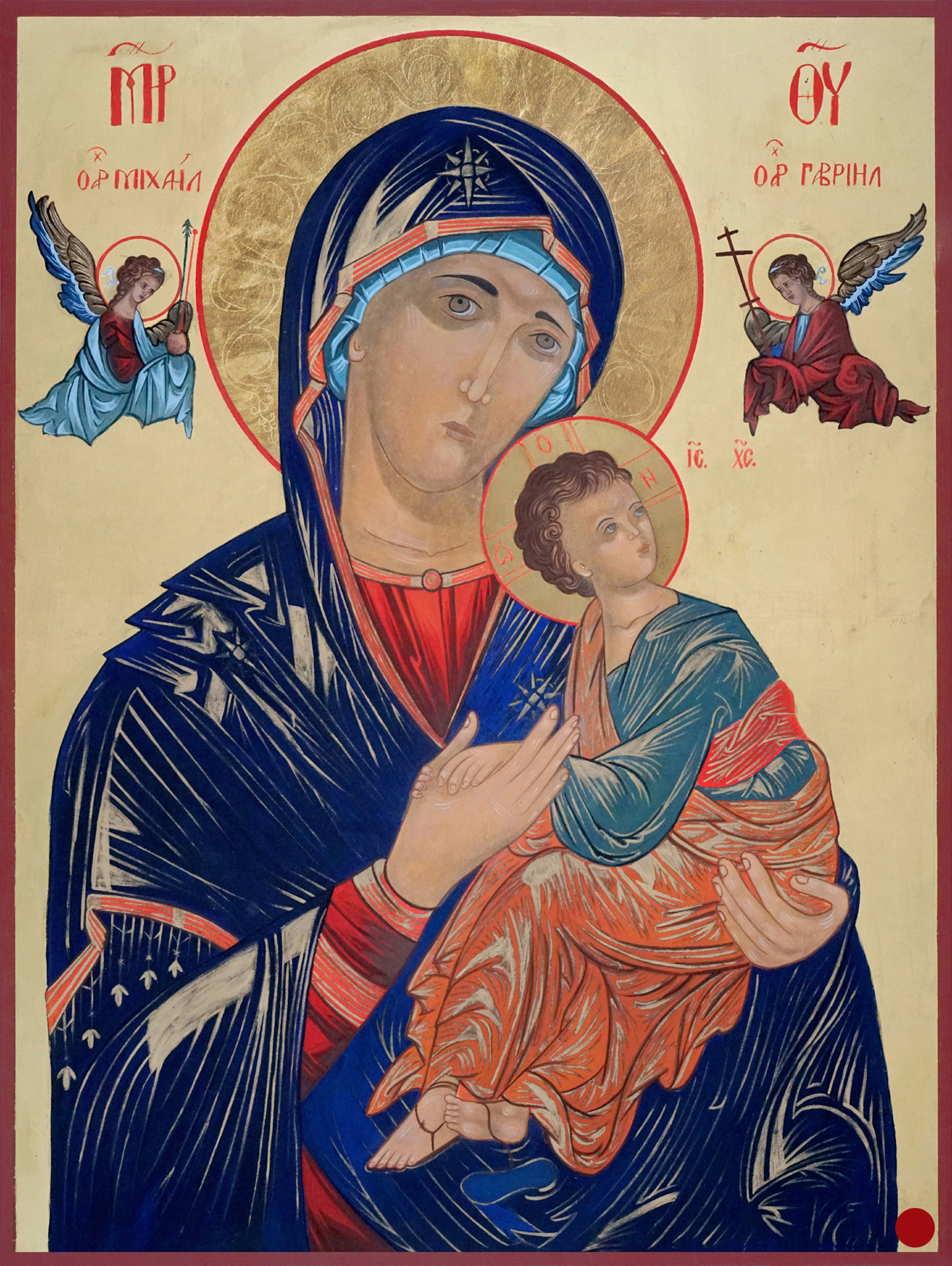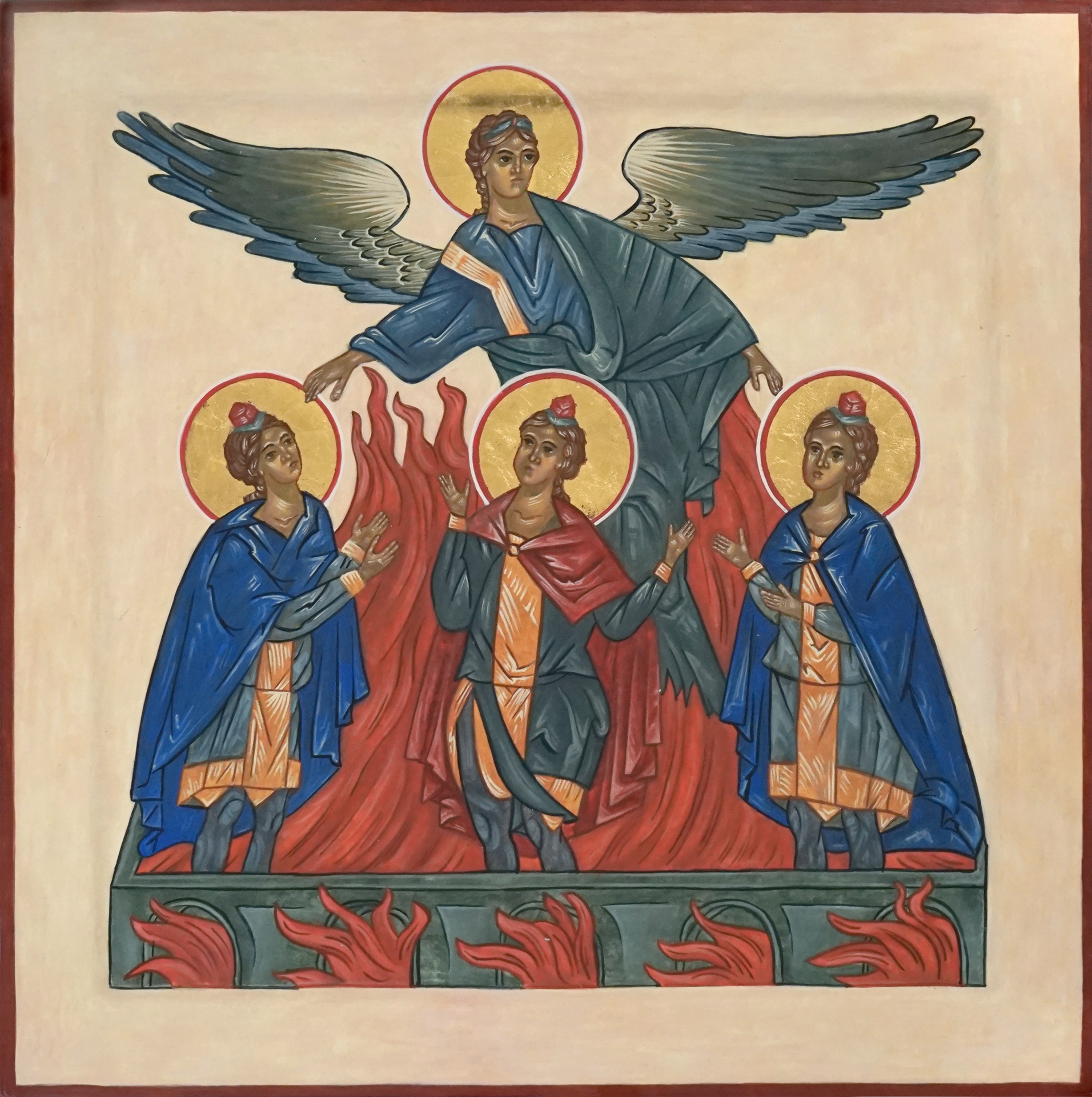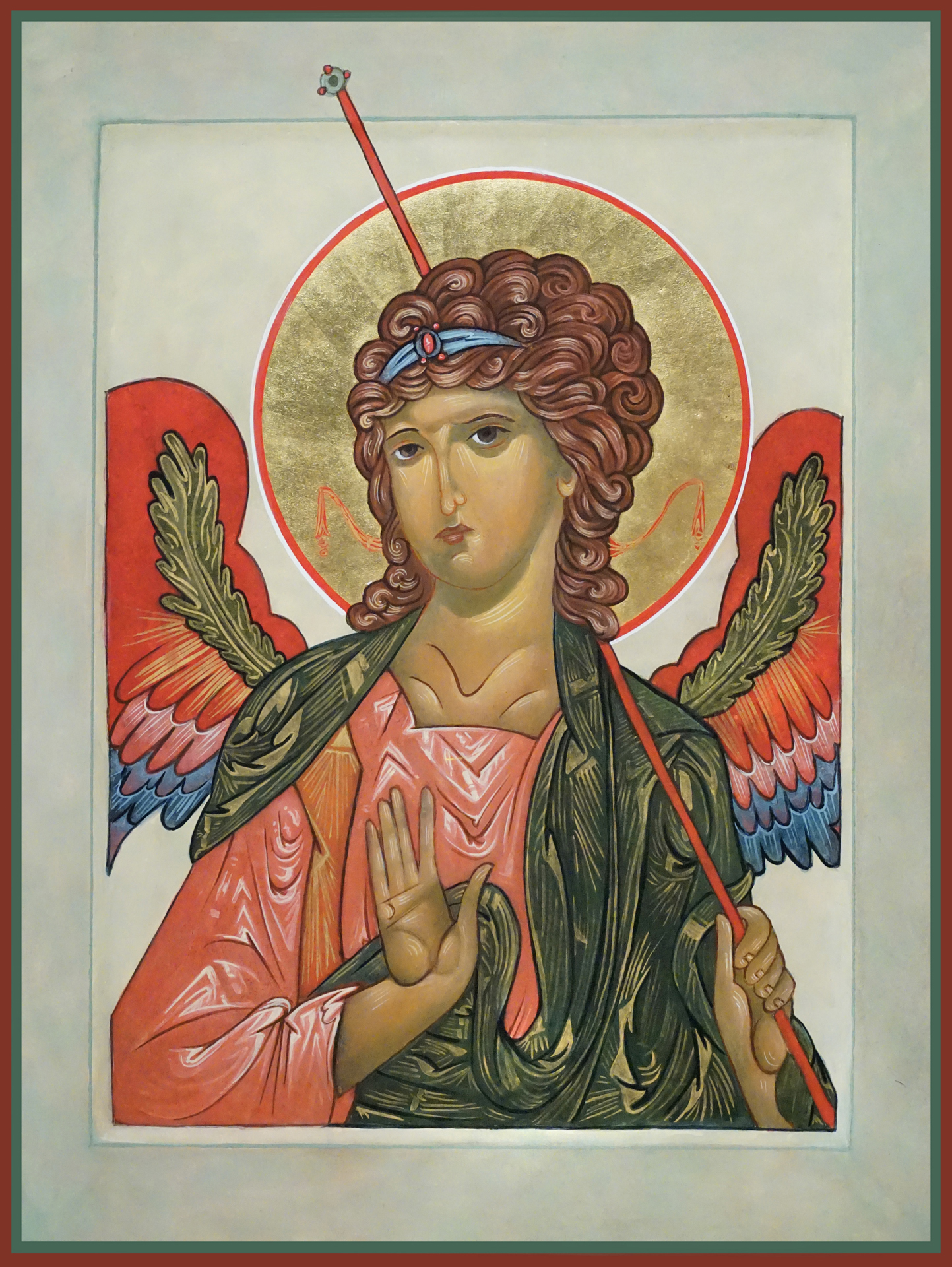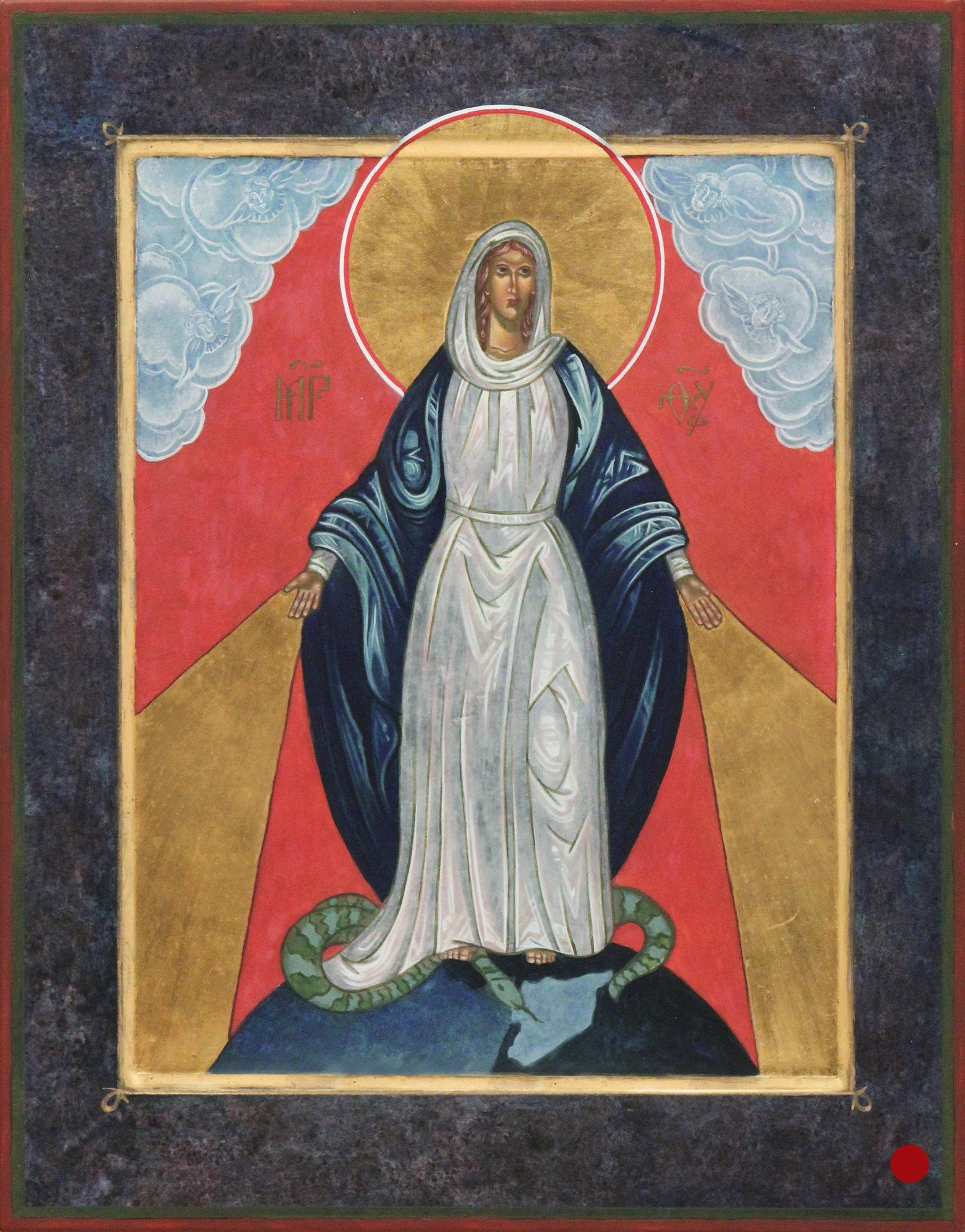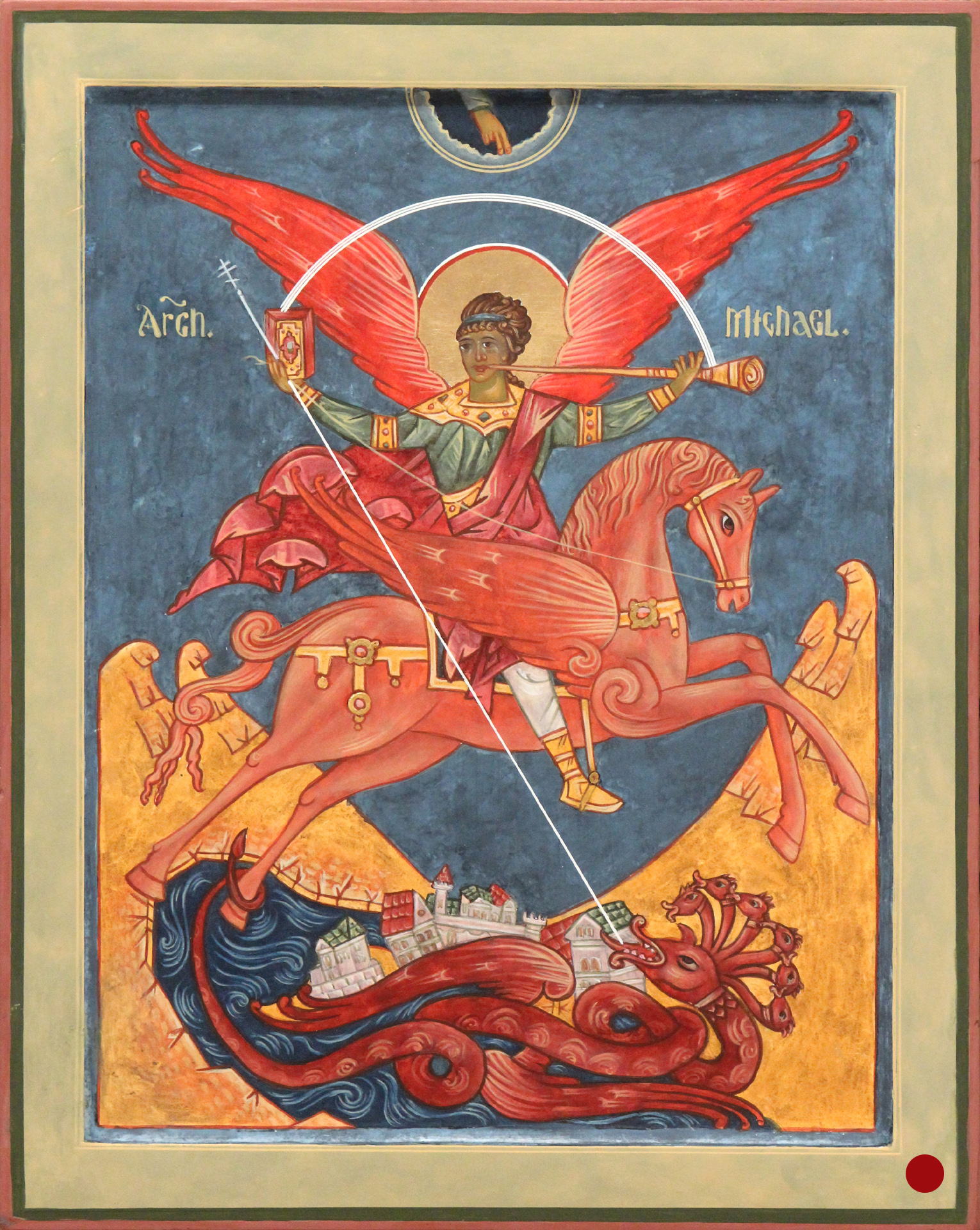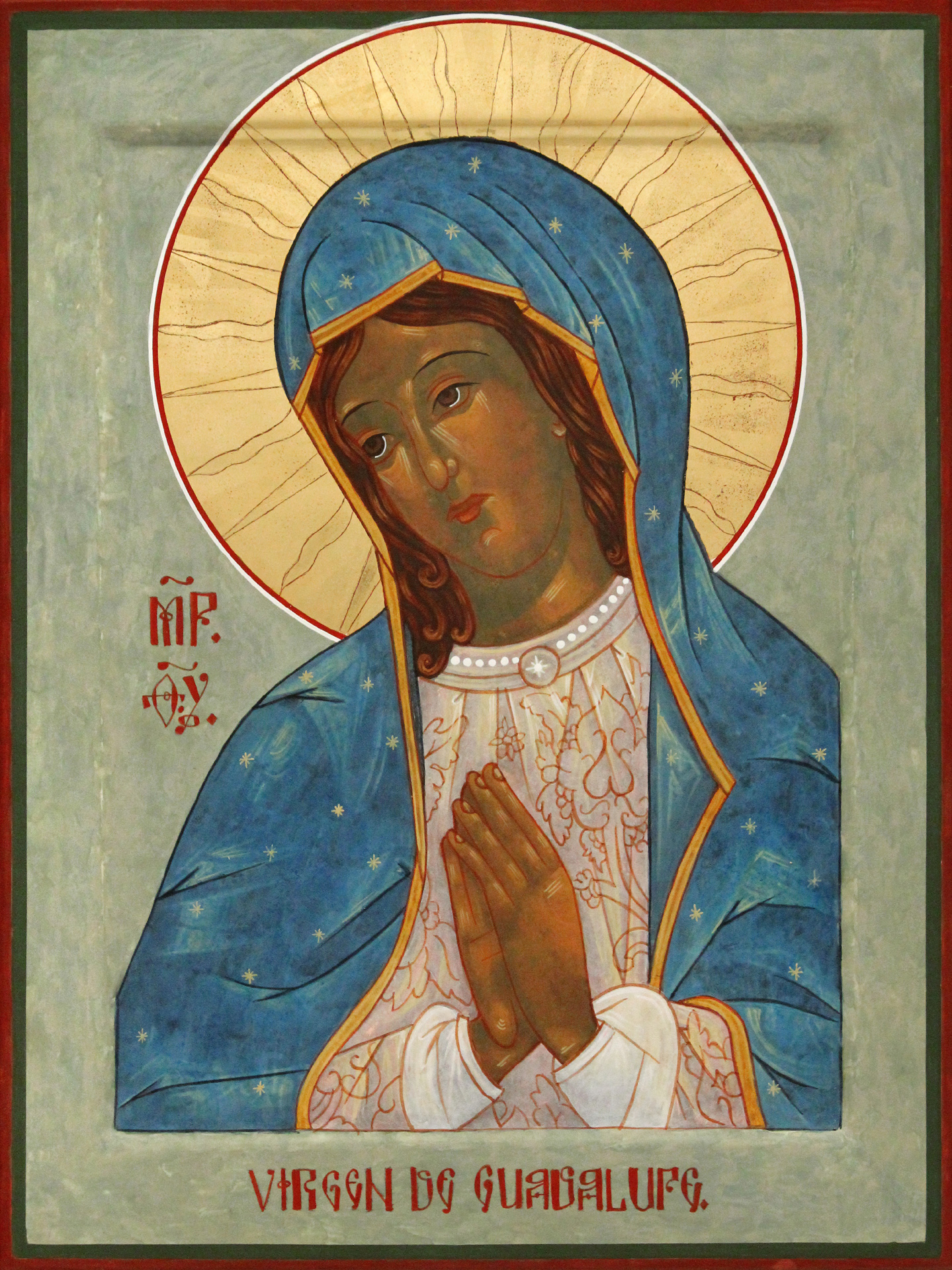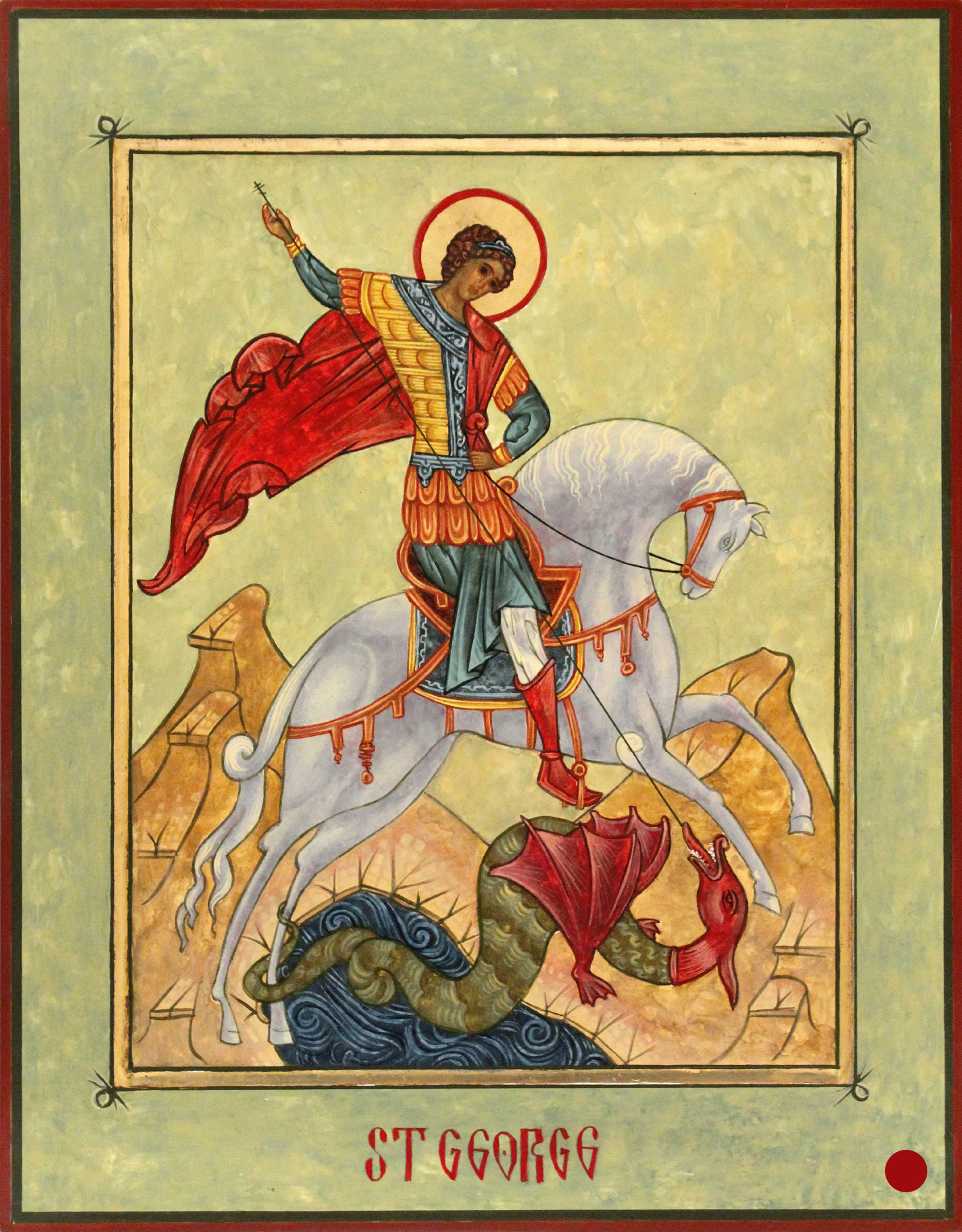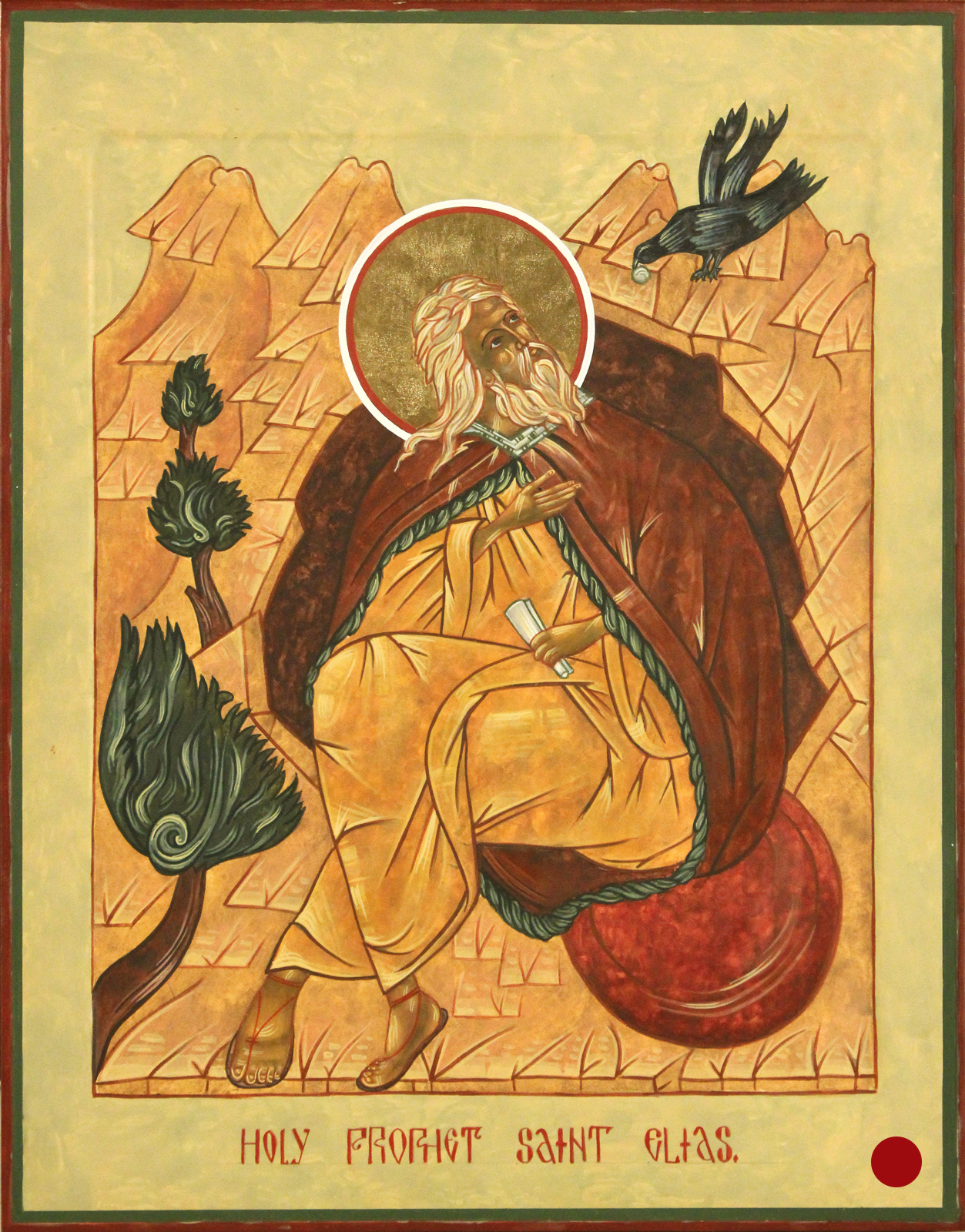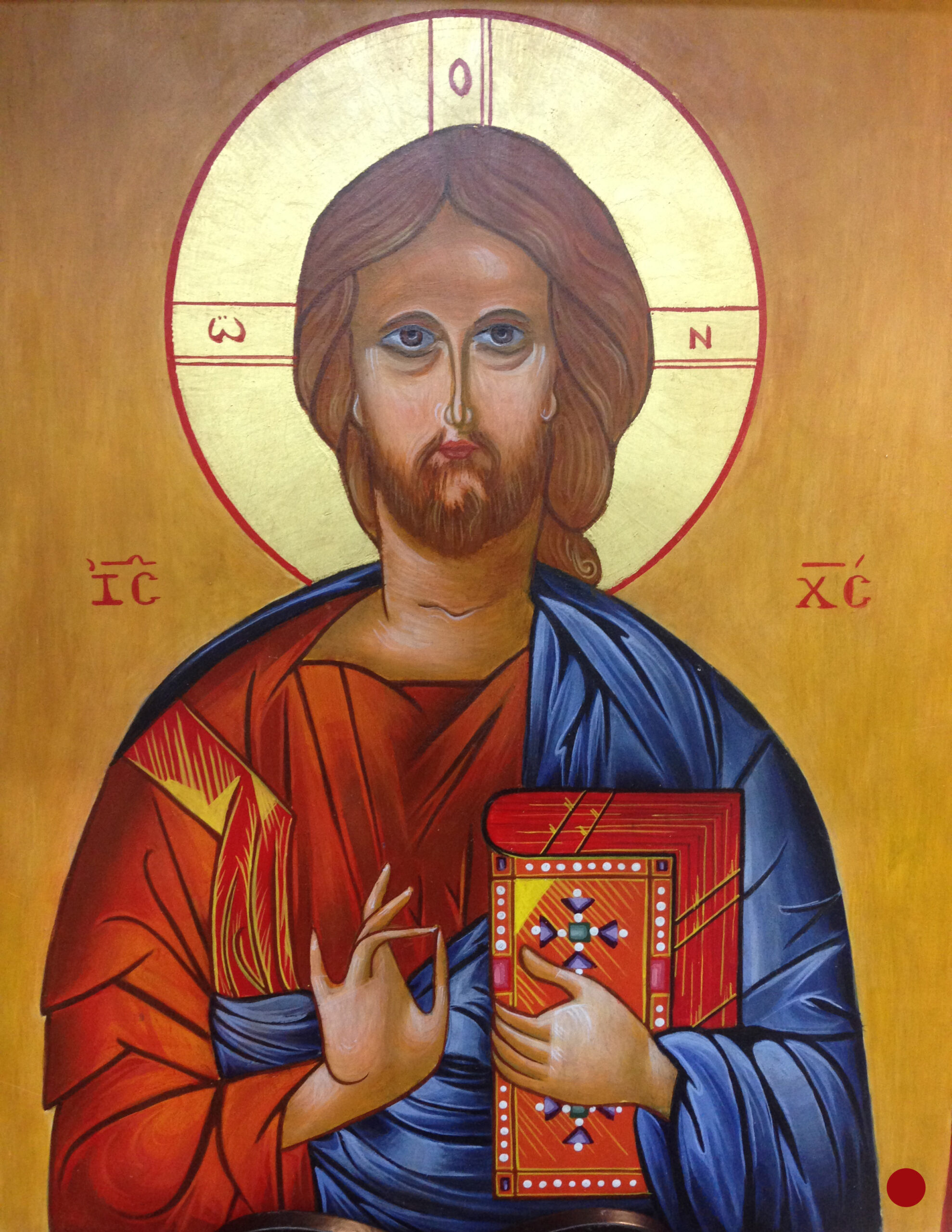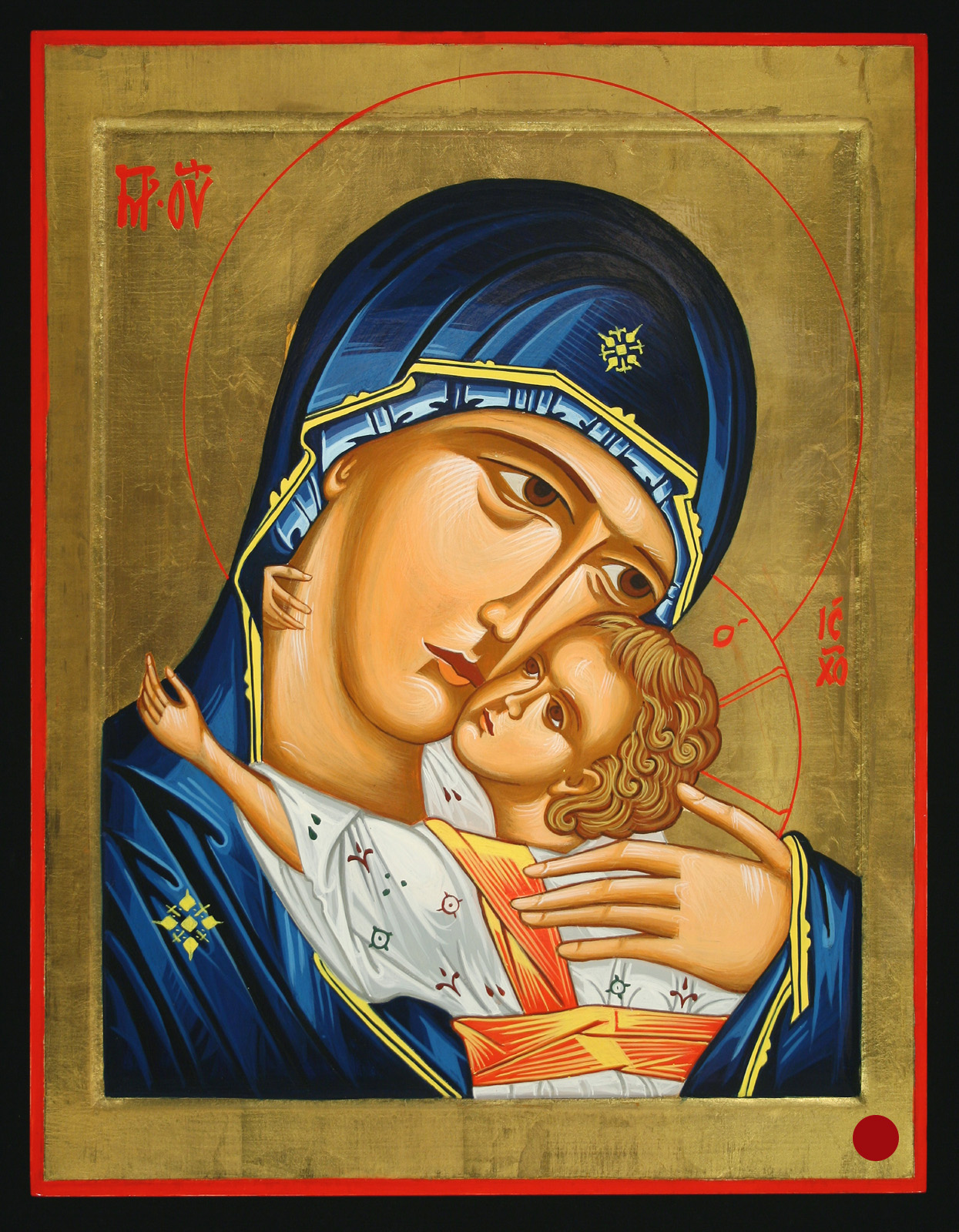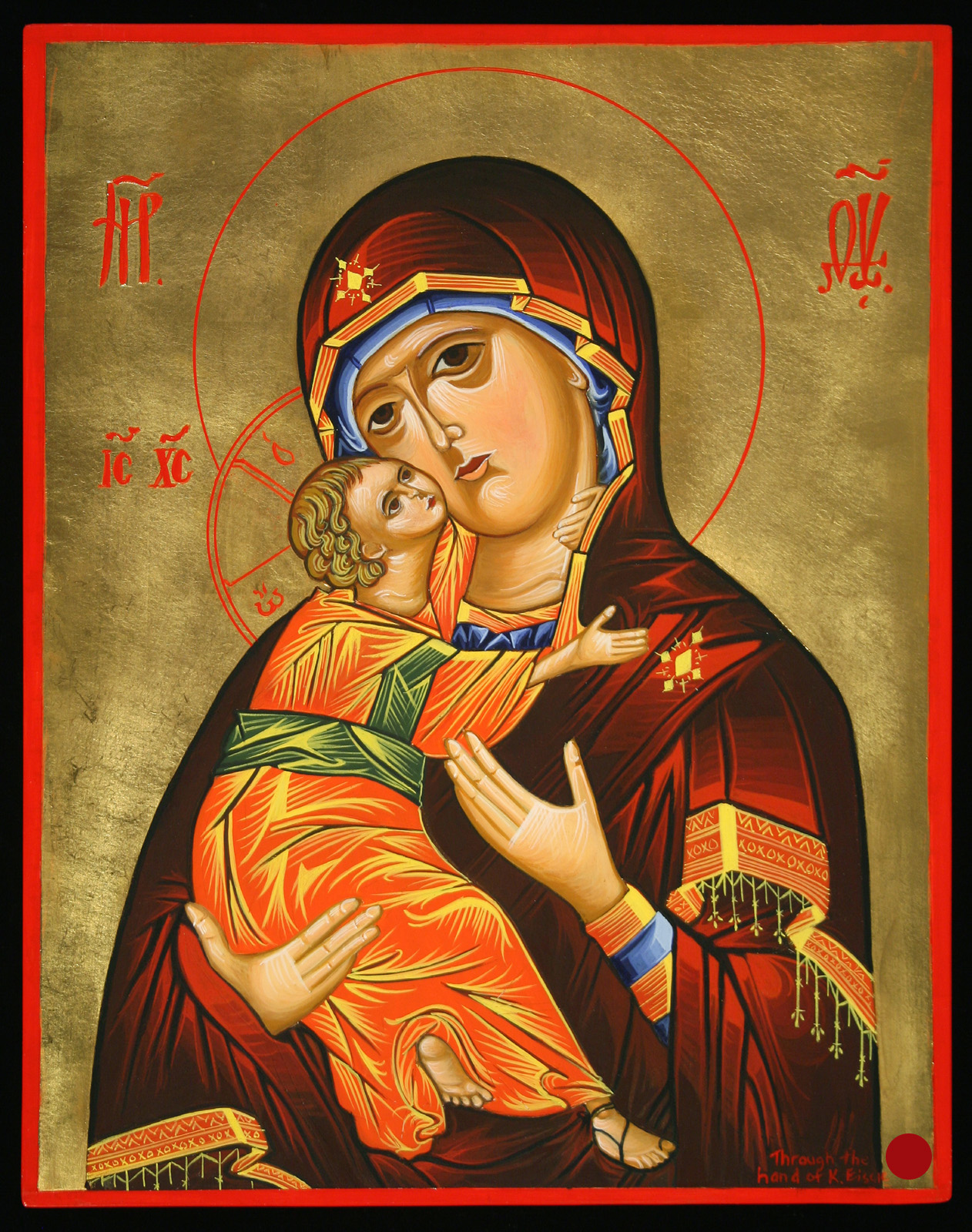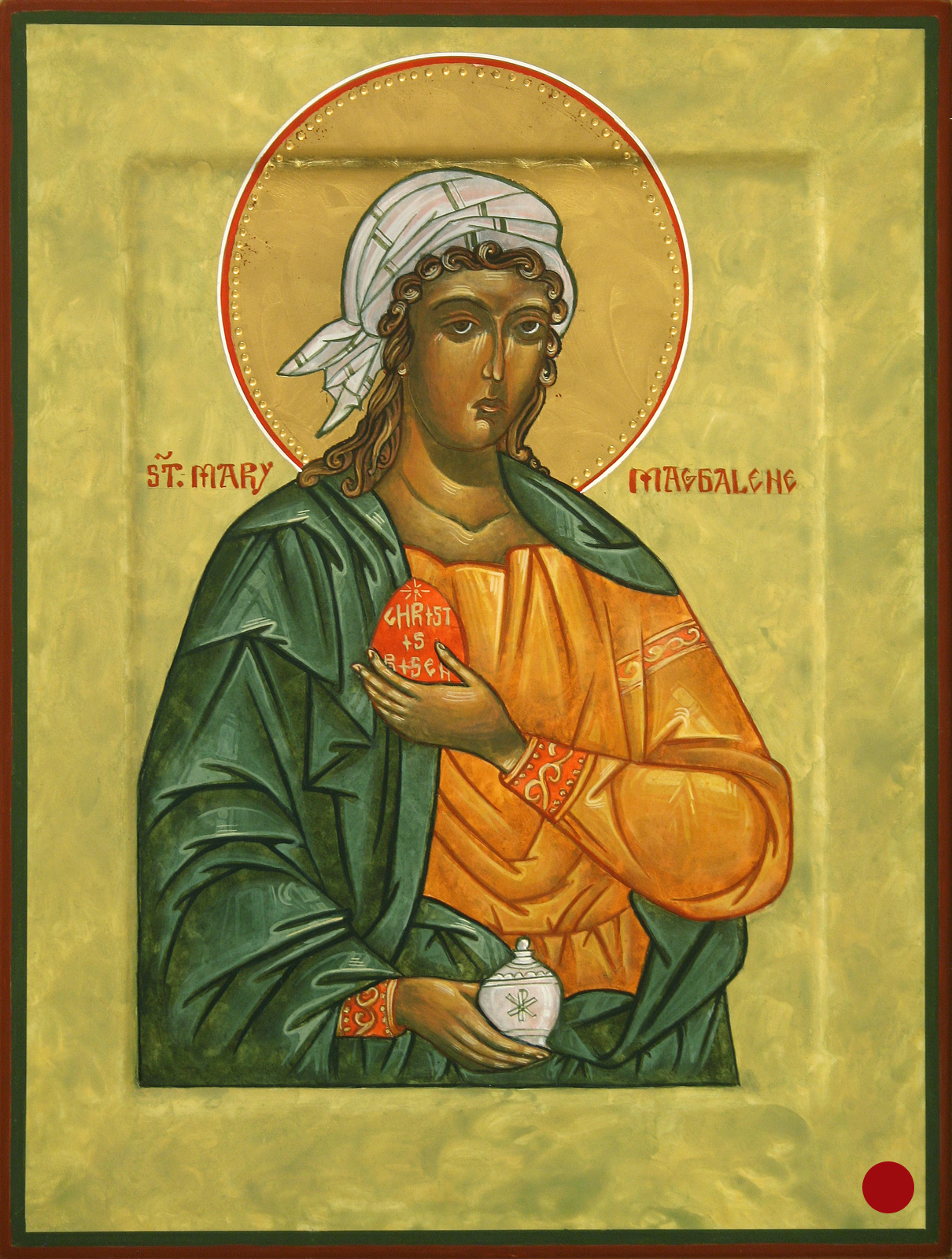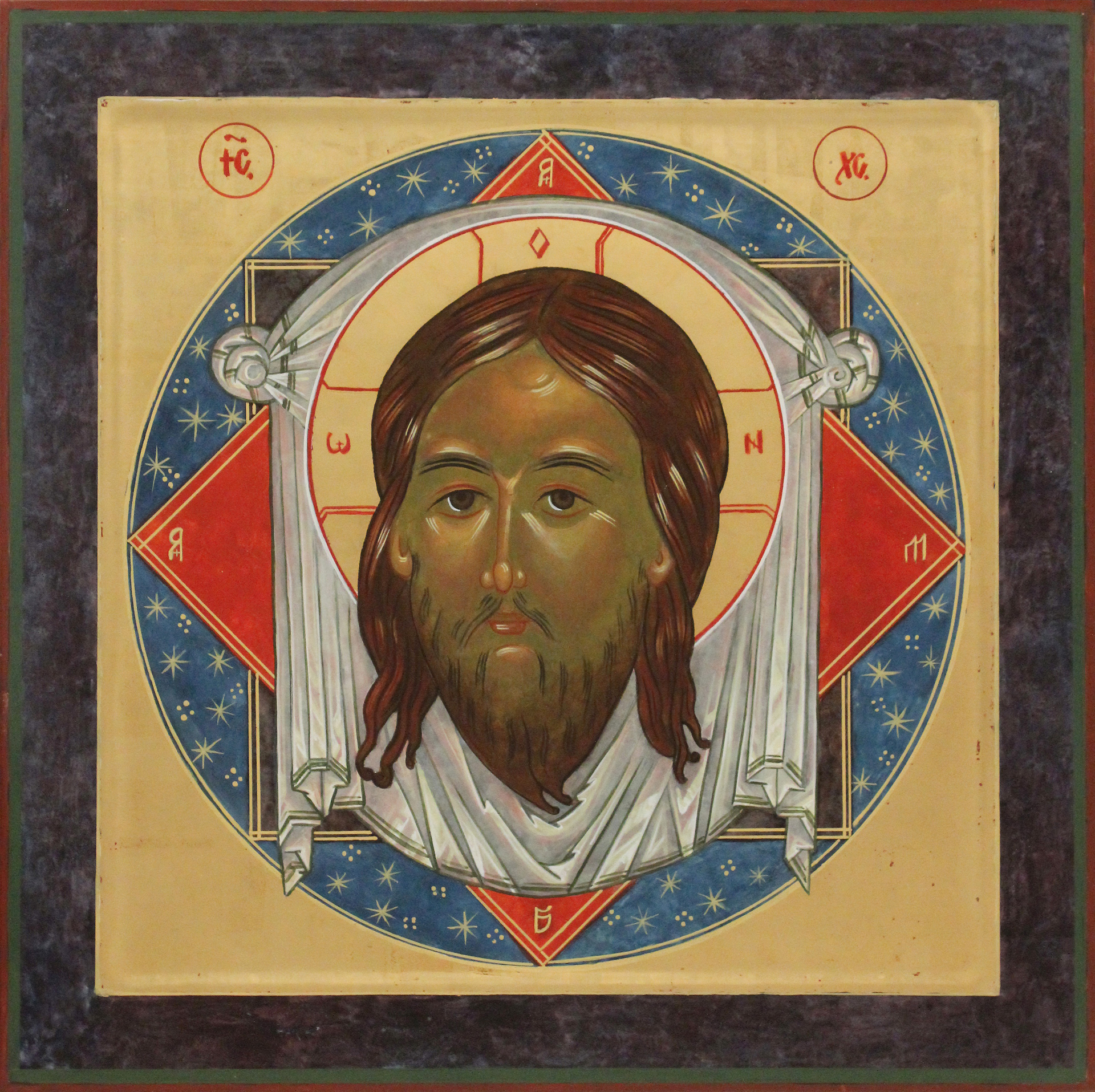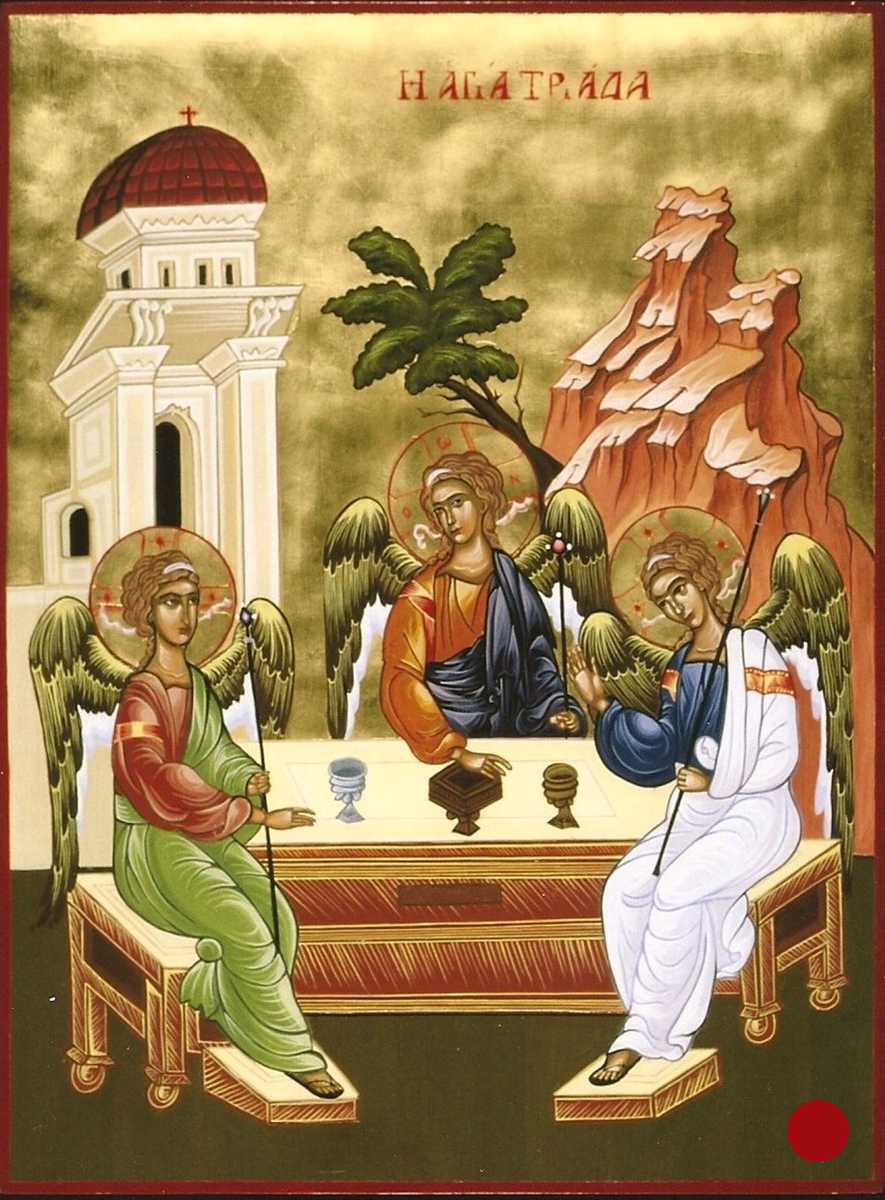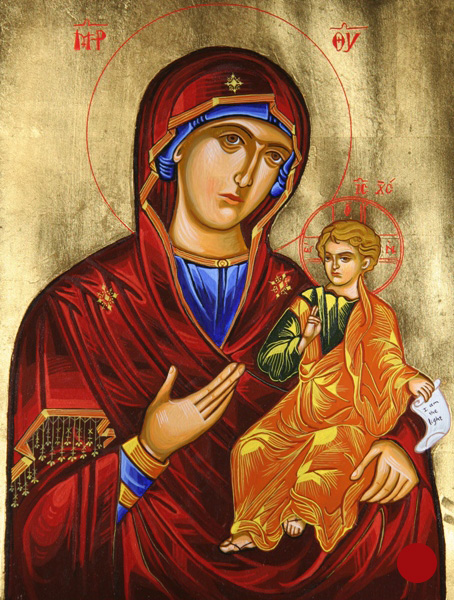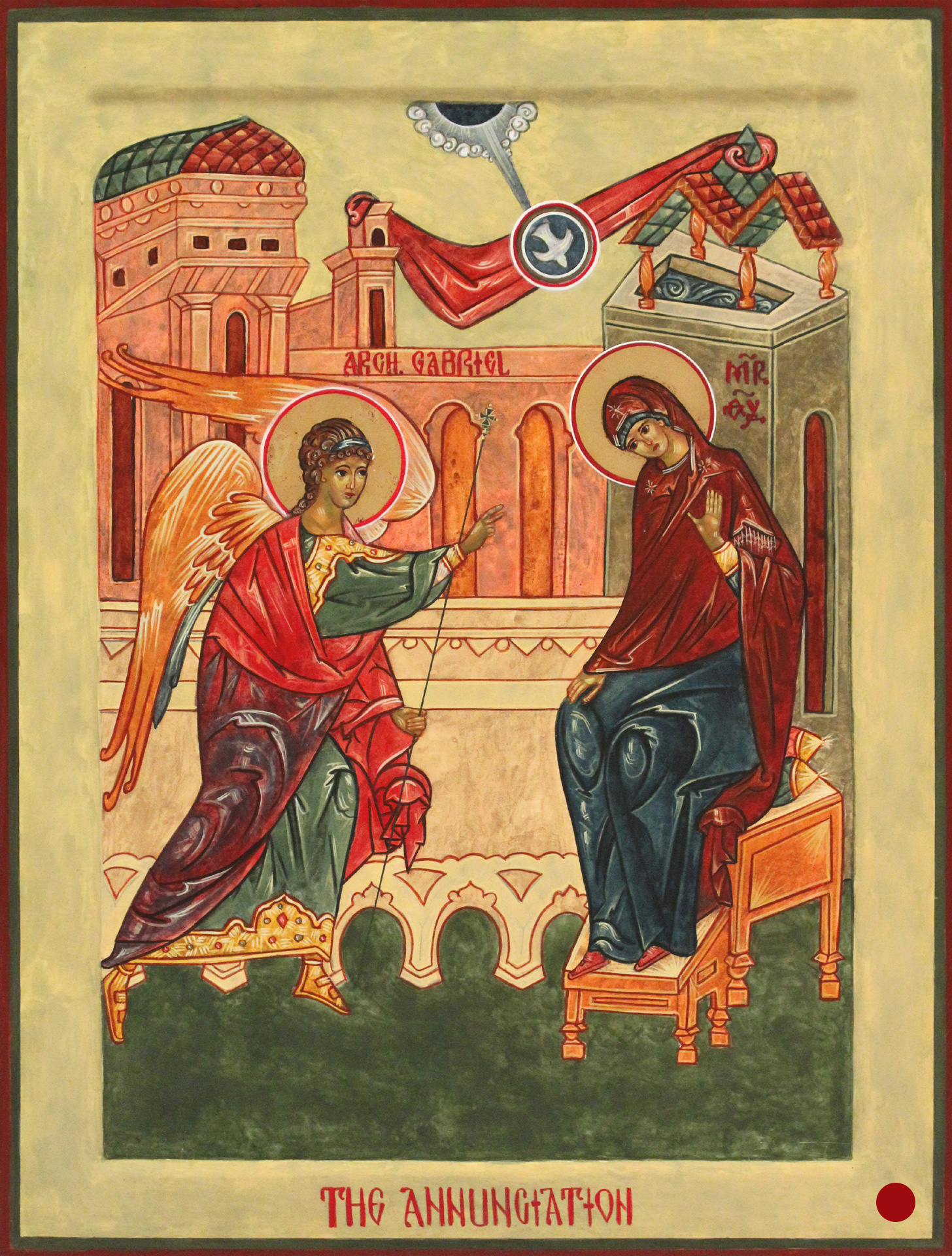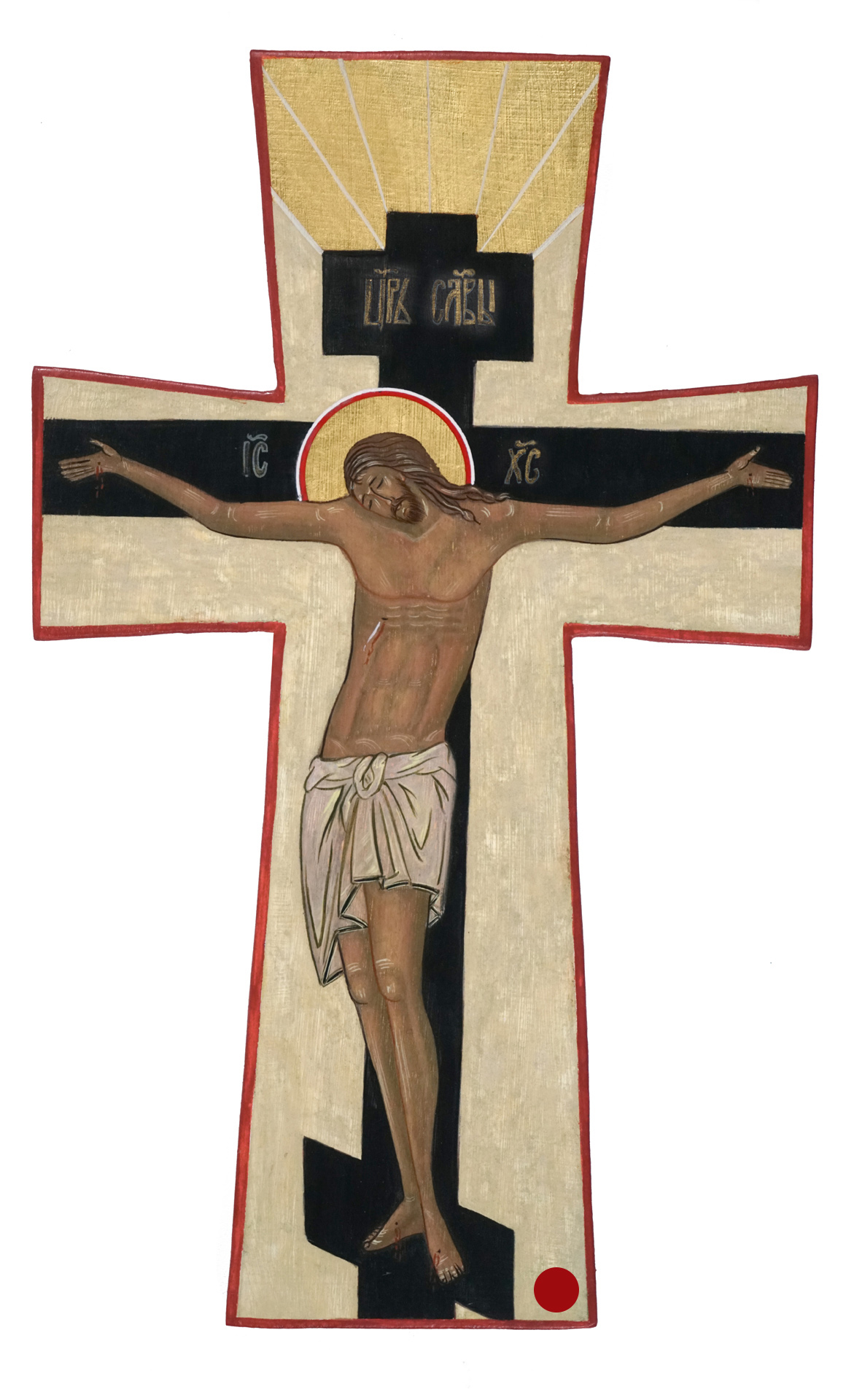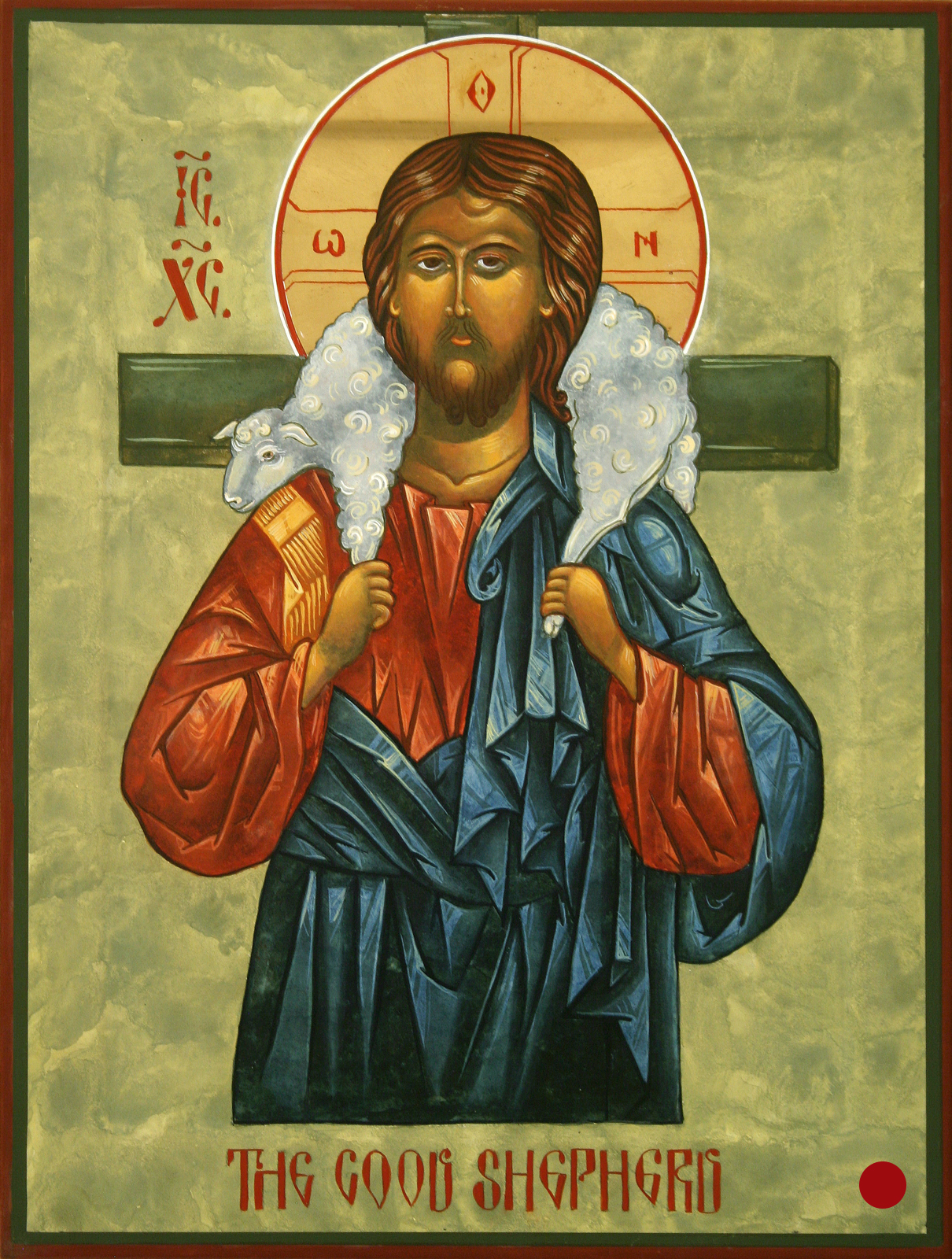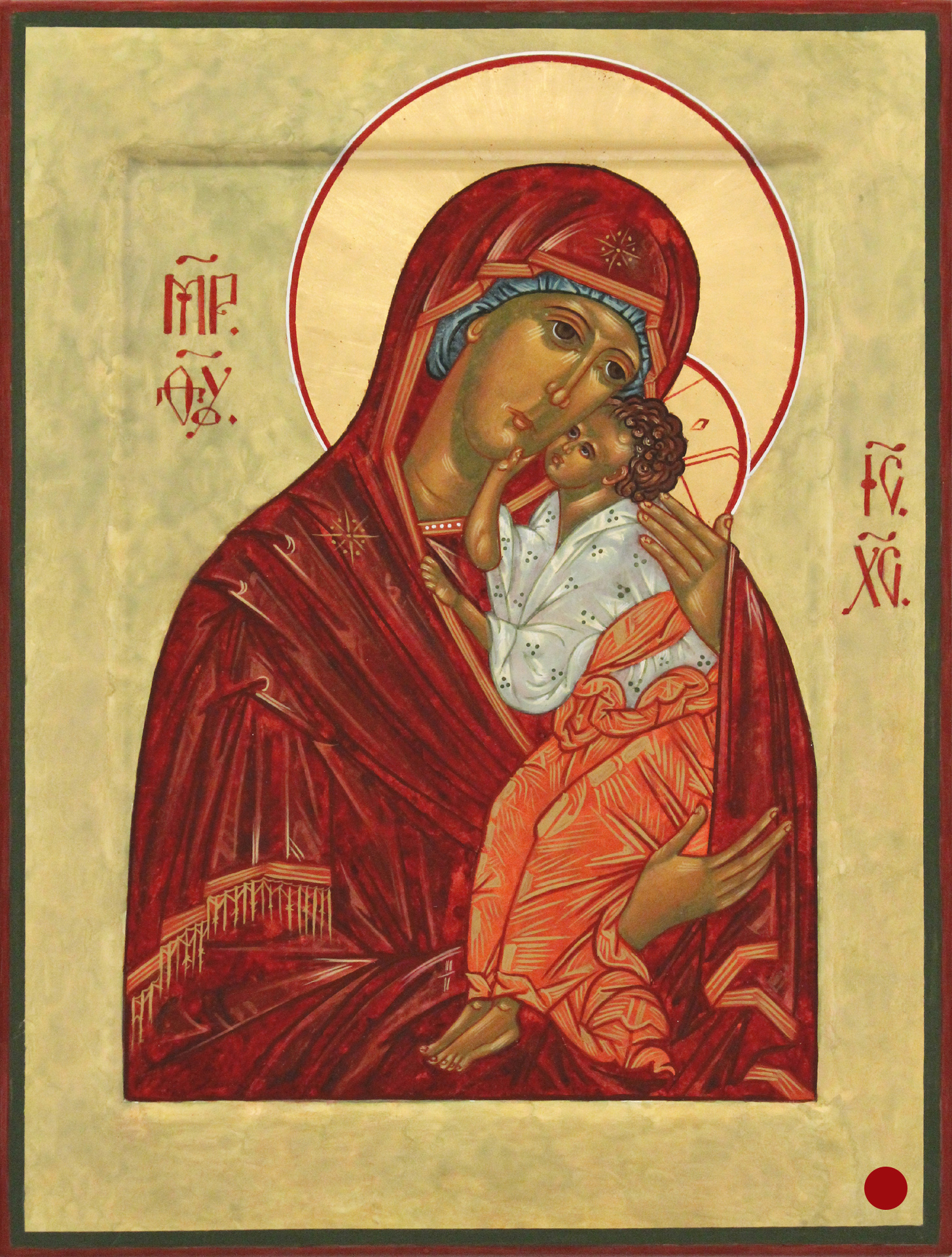Each element in the creation of an icon, and the way that it is painted, has symbolic meaning. Traditionally, the thick wooden board is covered with thirty three layers of gesso for the years of Christ’s life and the application of the twenty-four carat gold to the halos represents the passage from the spiritual world to the material. Icons are often referred to as “spiritual doorways”. The paint is made by the artist with egg yolk, white wine, and pure, powdered pigments ground from rocks and precious stones. New paint has to be created each time the icon is painted on because the paint dries very quickly and can’t be saved. As the paint is applied in layers, a glow from within the figure is created. It’s interesting to note that both sides of the icon figures are in shadow – Icons are never painted with traditional light and shadow shading; the source of light is always from within.
Colors in Icons have many meanings. Red and blues are very expensive pigments and therefore are used to signify royalty. For example, in the Hodigitria Icon, Mary’s blue headdress symbolizes faith, and humility, with the red, outer garment, the mystery of divine life. Three stars are attached to her robe, representing not only virginity, purity, and power; but also the Holy Trinity, and Jesus’ birth, death, and resurrection. Each star is designed with eight rays, representing the seven days of creation and the day of the return of Christ.
The way the figures in an icon are painted is very meaningful. They are not intended to be portraits. All of the features are symbolic; the long graceful noses show elegance, the wide forehead portrays wisdom, and the small lips signify that no words are spoken carelessly. If one looks closely at Jesus’ forehead, you will see that one side is larger than the other. This represents the Godly wisdom in contrast to his humanity.
Finally, Icons are painted in inverse perspective. This means that instead of one being drawn into the painting, the figures and story of the Icon are drawn out to us. When painting (or “writing”) an Icon, the artist always starts with a prayer and continues praying and meditating while working. When the Icon is finished, wax is applied to protect the paint, and a closing prayer is said.

